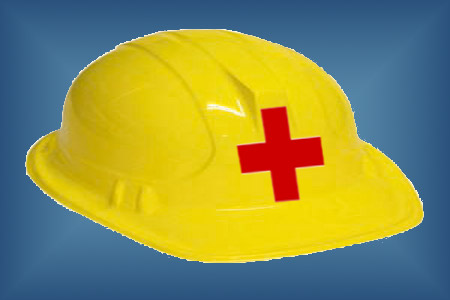
In British Columbia, the term “Joint Health and Safety Committee” (JHSC) describes a workplace committee consisting of worker and employer representatives united in the task of identifying and resolving workplace health and safety problems. A JHSC (also known by various other terms across Canada) can provide a multitude of benefits for both the employer (management) and the employees – provided that the committee operates with equal cooperation from both parties and is able to successfully promote and monitor a well-founded and effectual occupational health and safety program.
In British Columbia, the Workers Compensation Act of maintenance is the need for continuing inspection of the PPE. If carefully performed, PPE inspections will identify damaged or malfunctioning PPE before it is used. PPE that is not performing up to manufacturers’ specifications should be discarded; for example, respiratory protection devices require an elaborate program of repair, cleaning, storage and periodic testing. Wearing poorly maintained or malfunctioning PPE could be more dangerous than not wearing any form of protection at all, and yet the workers think they are protected when, in reality, they are not.
The JHSC serves to identify workplace health and safety responsibilities, encourage positive attitudes, and to assist the employer in reducing/eliminating the risk of workplace injuries or diseases – serving as an excellent means of communication amongst the different ranks in a company. The JHSC’s role includes: the promotion of safe work practices; assisting in the creation and upkeep of a safe and healthy workplace; recommending actions that will improve the effectiveness of the occupational health and safety program; and promoting compliance with WCB Regulation.
Establishing a JHSC involves a methodic process of organization, commitment, and appointing the most appropriate people to perform required tasks. BC’s WCB Regulation lays out the official provincial guidelines for JHSC’s, which involve a number of factors, including: the degree of hazards present in the workplace; the numbers of employees, departments, locations, sites, unions or worker groups; and the need to represent different shifts, departments, locations, etc. Committee members should be selected and assigned to relevant tasks according to the needs of the company – and the interests of ALL workers must be represented. There should be no fewer than four regular members in the committee – each of whom is employed by the company and has adequate experience in and knowledge of working conditions, processes and practices. Membership must be chosen by and represent both the workers and the employer, and at least half of the members must be worker representatives, elected by their peers.
While it is ultimately the employer’s responsibility to administer and maintain the safety program in their workplace, the JHSC is responsible for identifying and recommending potential solutions to existing health and safety concerns. The individual workers also have the responsibility of reporting problems to their supervisor or employer, and if an issue is not resolved, the employee should contact a committee member. As with any workplace initiative, the JHSC functions best when all concerned parties (no matter what level they are at) work in cohesion towards the common goal of a safer, healthier workplace.
Simply Safety! incident management software can help protect you and your company by allowing you to be proactive in reducing risk and associated costs and keeping an accurate due diligence trail. Simply Safety! software program replaces paper-based or spreadsheet tracking with a modern efficient way to manage critical compliance data.
Looking for a better way? Call 1 800 862-9939 today to book a 20 minute online web demo of Simply Safety! for your management team!
Visit the Simply Safety! products page.
